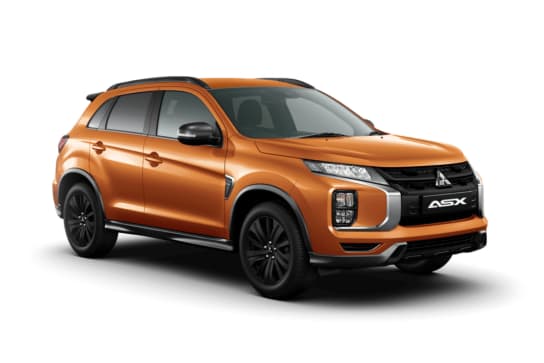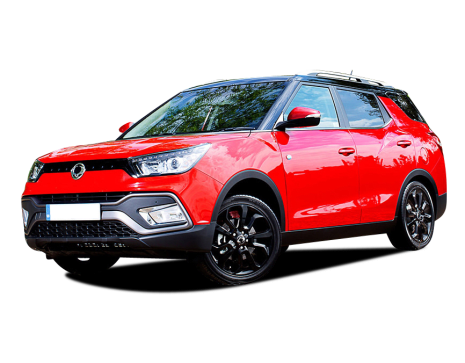
Mazda CX-5 VS Toyota Land Cruiser Prado
Mazda CX-5
Likes
- Pleasant and accessible cabin
- Good power and handling
- Well equipped
Dislikes
- Feels compact inside
- Individual storage on the thin side
- Thirsty engine
Toyota Land Cruiser Prado
Likes
- On-road refinement
- Off-road capability
- Modern, well-appointed cabin
Dislikes
- Seven-seater’s compromised boot
- Real-world fuel consumption
- Not what you’d call fast
Summary
Mazda CX-5
This week I’m family testing the new Mazda CX-5 Akera G35 and the top-grade model is well-equipped. But it faces stiff competition in the mid-sized SUV market with rivals like the Honda CR-V, Kia Sportage and the ever-popular Toyota RAV4.
Read more about
- Too many SUVs? New 2024 Mazda CX-70, incoming CX-80 and existing CX-60 and CX-90 won't oversaturate the line-up with SUVs, says Australian boss
- "Unless you have renewable energy, EVs don't make sense": Is Mazda Australia falling behind the electric car curve as hybrid and EV sales pick up?
- 2024 Mazda CX-70 mid-size SUV revealed as wider, more powerful alternative to CX-60, can it take on Volvo XC60, BMW X3 and Mercedes GLC?
How do you remain competitive in one of the most popular SUV classes? My family of three is finding out for you!
| Safety rating | |
|---|---|
| Engine Type | 2.5L turbo |
| Fuel Type | — |
| Fuel Efficiency | 8.2L/100km |
| Seating | 5 seats |
Toyota Land Cruiser Prado
Is there a more anticipated new car launch of this year? Since the 250 Series Prado’s development started in earnest back in 2022, there have been rumblings about what to expect.
And while the LandCruiser Prado might not be as strong a seller for Toyota as a HiLux or RAV4, it is crucial to get this one right. Not only does the Prado have to be tough enough for rural work, it needs to be slick, comfortable and desirable enough for family buyers who like the finer things in life.
Like a pair of RM Williams boots, then, the Prado needs to perform as well on the cattle station as it does in the boardroom.
Read more about
- 2025 Toyota Prado order system changes, but will it affect how and when your Toyota LandCruiser, Toyota RAV4 or Toyota Corolla Cross hybrid arrives?
- Can't afford the cheapest new Toyota? Aussie VP has the solution for those that want a Toyota alternative to the cut-price Kia Picanto, Suzuki Swift hybrid, MG ZS, Hyundai Venue, Mitsubishi ASX and more
- New Toyota LandCruiser FJ: Everything we know so far about the sub Toyota Prado and LandCruiser 300 Series four-wheel drive
The latest 250 Series model is off to a great start in the looks department with chic retro detailing and dramatic surfaces. But the Prado’s talent needs to run a lot deeper than just looks.
An all-new ‘GA-F’ frame shared with the bigger 300 Series, revised powertrain and fully overhauled cabin has our mouths watering. What better test for Toyota’s new family wagon than a hot, humid and harsh Kakadu National Park?
| Safety rating | — |
|---|---|
| Engine Type | 2.8L turbo |
| Fuel Type | Diesel |
| Fuel Efficiency | 7.9L/100km |
| Seating | 5 seats |
Verdict
Mazda CX-57.6/10
The Mazda CX-5 Akera G35 offers small families a great host of premium features, as well as solid power and handling – all in an attractive package. But the emphasis here is on ‘small’ families because it’s on the compact side for a mid-sized SUV and its rivals offer more back seat space.
Its ongoing costs are reasonable and I enjoy driving it, so it gets a 7.6/10 from me.
My son calls out the back seat as a bit squishy but he otherwise likes it. He gives it a 7.0/10
Toyota Land Cruiser Prado8.8/10
The new Prado has nailed the brief. It manages to leap ahead in diametrically opposed areas; not only is it far more refined, comfortable and confident on road, it makes off-roading easier than ever before and can tow more weight.
While the cabin layout, design and practicality is mostly excellent, the seven-seat versions’ boot has issues. You may not be put off by the high load lip or uneven floor but I’d recommend properly poring over the new Prado in person before taking the plunge.
Despite carrying over an engine, it feels like the biggest step in Prado’s history. Expect the appeal of this effortless, rough-and-tumble 4WD wagon to resonate with Prado fans and a whole new urban buyer. Get ready to see an awful lot of these on Australian roads soon.
Note: CarsGuide attended this event as a guest of the manufacturer, with travel, accommodation and meals provided.
The drive route took place on the traditional lands of the Larrakia, Murumburr and Jawoyn people and CarsGuide pays our respects to Elders past and present. CarsGuide would also like to thank Joshua Hunter, a Jawoyn Traditional Owner of the Wurrkbarbara clan, for his generosity.
Design
Mazda CX-5
The Mazda CX-5 hasn’t seen much change to the exterior other than a more horizontally-styled grille. It’s a medium SUV with a handsome kerb-side presence thanks to its full-suite of LED lights and 19-inch alloy wheels. It’s an inoffensive design that should appeal to a wide audience.
The interior looks premium with the brown Nappa leather upholstery and black leather trims. The plethora of soft-touchpoints throughout reinforces that the Akera is the top model.
There's one thing I really like about Mazda and that's how it manages to balance the traditional with the new. The cabin is a seamless blend of the two elements.
The instrument panel features a 7.0-inch digital display but still has analogue dials. There's a 10.25-inch multimedia system on the dash but still a bunch of control buttons and dials to press. The gear shifter is coupled with an electric brake, the sunroof is coupled with a manual blind. You get it.
This duology between high-end tech and traditional elements makes the interior feel up to date but very accessible.
Toyota Land Cruiser Prado
Sitting on Toyota’s GA-F ladder frame platform, the Prado’s dimensions have changed dramatically. With a 60mm longer wheelbase, Toyota has minimised the Prado’s front overhang giving the impression of having a wheel in each corner.
Looking back to the past helped influence the Prado’s appearance, with more horizontal and vertical surfaces. It has the appearance of beings carved back from a block of clay, with sharp lines in relief giving the shape tension and purpose.
By stepping the window line down 30mm and raising the seat position 20mm, Toyota has improved the sense of space inside the Prado’s cabin dramatically. Partially a nod to past LandCruisers, the new Prado is not only better looking, but more practical, too.
Practicality
Mazda CX-5
Despite sitting in the medium-SUV segment, the CX-5 is on the compact side for cabin space and front passengers benefit the most in terms of leg- and headroom.
Back rowers get a decent amount of headroom but legroom is squishy and my legs press into the back of the drivers seat when its in my driving position, and I'm only 168cm tall!
My seven-year old complained about his space and asked Dad to slide forward for more room, which is something to consider if you have gangly teenagers.
The seat comfort sits on the firmer side for both rows and the electric front seats are narrower and shorter than I like for long journeys but for the A to B trips, they’re comfy enough.
Only the driver’s seat gets powered lumbar support but they both have heat and ventilation functions.
Individual storage is average for this class with a smallish glove box and middle console that has a removable shelf. A deep utility tray, which houses the wireless charging pad and a 12-volt port, sits in front of the gearshift and there are two cupholders in the centre console.
Each door has a shallow storage bin and the front doors also get a skinny drink bottle holder.
For individual storage in the rear, you get map pockets on the rear of the front seats and two cupholders in a fold-down armrest.
The armrest also houses two USB-A ports and the heat function buttons for the outboard seats and it's because of this positioning and the narrower width of the seat, that the back row feels more suited to two, rather than three passengers.
The technology on the whole is easy enough to use but the rotary dial operation of the multimedia system is a bit annoying to access while on the go.
The wireless Apple CarPlay and Android Auto is a great feature and means one less cable to worry about but the built-in satellite navigation with 10-year map updates is a highlight. The head-up display pulls through the nav directions, too, which is always handy.
You also get two USB-C ports and another 12-volt outlet up front, so everyone should be sorted for charging.
The boot features a powered tailgate which is a handy family feature and a temporary spare tyre is located underneath the level floor.
You get 438L of storage capacity with the second row seat upright, which is plenty for my errands and grocery shop. That jumps up to 1340L (VDA) when the rear seats are folded.
The cargo cover attaches to the lid, meaning it stays out of the way when you're loading stuff into the boot.
Toyota Land Cruiser Prado
Only two grades of Prado are available in five-seat guise, the GX and off-road focused Altitude. And although, on paper, the seven-seat option makes more sense, it brings one of the Prado’s biggest flaws.
Toyota quotes a vast 906L space with the third-row folded in seven-seat versions (and much smaller 182L space will all seats up) but the reality is less appealing. Because Toyota had to package the 'V-Active' system’s battery under the boot floor, the sixth and seventh seats sit proud about 100mm when folded.
A flimsy plastic riser box with storage space brings the floor level up when the third row is stowed. It may be a good spot for wet swimmers or valuables, but it dramatically increases load height. It is also only rated to carry a maximum 60kg load. The third row can’t be easily removed, either. This isn’t the most elegant solution.
The Prado’s five-seat layout is more practical for touring than the small increase in boot space (954L) suggests, with a lower load threshold and more useable space. Fold the second row flat and the load area is close to, if not quite, flat, and space increases to 1895L (1829L in the seven-seat).
Payloads take a circa-100kg nosedive coinciding with a weight increase of about 270kg over the old car to between 2495-2595kg.
It means the Prado 250 Series can only carry between 580kg (Altitude) and 615g (GXL) before breaking over the gross vehicle mass (GVM) rating.
Still, improved chassis stiffness and a new transmission mean the braked towing capacity jumps 500kg to 3500kg.
And then we come back to the overwhelming positives in the Prado which continues in the cabin which is leaps and bounds ahead of its predecessor.
That said, it doesn’t go overly-digital like GWM’s Tank 500, maintaining physical controls for low-range, locking diffs, drive modes, crawl control and, most important of all, the HVAC and seat temperature controls.
Every Prado has 12 cupholders, including two in the front centre console. The door bins are a little small but a refrigerated centre cubby (GXL and above) means you can keep bottles of water nice and cool.
Material quality is stand-out, even the GX has lashings of squidgy rubber and synthetic leather trimmings on the dashboard and door cards. GXL and above get squishy knee-pads on the transmission tunnel, too. Only the too-low armrests and a driving position geared towards shorter drivers are worth the smallest of complaints. The seats, though, are very comfortable no matter the grade.
The Prado’s second row has plenty of knee room for me (188cm) but the floor is set quite high, compromising comfort for taller occupants. There’s also hard plastic cladding on the transmission tunnel that impacts middle seat comfort. A fold-down armrest, 60/40 split backrest with several levels of recline, third climate zone (in GXL and above), face-height vents, two USB-C charge points and a 12-volt socket mean it’s pretty comfy in the back.
With tumble-forward second-row seats and a big, square door mean getting into the Prado’s third row is easier than before and simpler than a Ford Everest. Once back there you’ll find four more cupholders, two USB-C charge points and adjustable backrest decline. Again, the high floor means it isn’t suitable for carrying seven adults great distances.
For child seats, the Prado has ISOFIX tabs on the outboard second row seats and a total of three top tether anchors for the second row.
Price and features
Mazda CX-5
There are five grades for the CX-5. The top two grades, the GT SP and Akera, have a choice between a 2.5-litre petrol or turbo-petrol engine.
On test here is the flagship Akera grade with the 2.5L turbo-petrol engine. Before on-road costs, it is priced at $55,000. That positions it towards the top-end of its competitors with the Kia Sportage GT-Line AWD coming in at $49,920 (MSRP) and the Toyota RAV4 sliding in just under at $54,410 (MSRP). However, the new Honda CR-V is more expensive by $2.0K.
The Akera is well-equipped with premium features like a sunroof, heated and ventilated front seats, heated rear outboard seats, a heated steering wheel and brown Nappa leather upholstery.
The technology is well-rounded with a 10-speaker Bose sound system, wireless Apple CarPlay and Android Auto and a 10.25-inch multimedia system with built-in satellite navigation (including map updates for 10 years).
There are some good practical features, too, like a powered tailgate, keyless entry and start as well as powered lumbar support on the drivers' seat.
Toyota Land Cruiser Prado
Grade for grade, the 2025 Toyota Prado has jumped in price significantly with the GX $9670 more than before and top-spec Kakadu $12,552 dearer.
Despite the same basic engine, there is justification with classier recycled cloth upholstery in the five-seat GX ($72,500), ice cold dual-zone climate control, a strong 10-speaker sound system and 18-inch alloy wheels.
Auto LED headlights, manual seat adjustment, keyless entry, auto wipers, five USB-C charge points, a 7.0-inch digital driver’s display and generous 12.3-inch multimedia touchscreen with 12 months of Toyota connected services along with wireless Apple CarPlay and Android Auto make the GX feel like a mighty complete specification.
That said, it still has manual seat adjustment, a urethane steering wheel and rubber floor mats but then it is the workhorse. Practicalities like 12 cupholders and 220-volt three-pin power outlet in the boot mean it’s fit for purpose.
The Prado GXL ($79,990) is what most will think of as the minimum family trim with roof rails, a power tailgate with rear window hatch, heated and ventilated front seats, synthetic leather upholstery, eight-way power adjust driver’s seat, leather-accented steering wheel and shifter, a total of seven USB-C charge points and a wireless smartphone charger.
The next step is the VX; a more luxurious urban-oriented trim that gets a different (and a little ugly) ‘Lux’ front grille reminiscent of the old Prado, 20-inch alloy wheels, body colour wheel arch and body trims and Bi-LED headlights with auto levelling and high beam.
For its near-$90K asking price the VX’s cabin bumps the digital cluster to 12.3 inches, adds leather-accented upholstery, power lumbar adjust for the driver, four-way power passenger adjust (without height), a refrigerated centre cubby, carpet floor mats, power-adjust steering column, a 14-speaker JBL sound system — that isn’t a huge upgrade — and terrain monitoring cameras.
Visually closer to the GXL with the square grille and ‘TOYOTA’ lettering, the $92,700 (before on-road costs) Altitude is Toyota’s off-road focused model. It’s also probably the best looking, available in two exclusive paint colours ('Tanami Taupe' and 'Ningaloo Blue') and riding on tough matt grey multi-spoke 18-inch alloys with Toyo Open Country all-terrain tyres.
Inside it’s much like the VX, though upgraded with a heated steering wheel, digital rear-view mirror and a sunroof. It loses tyre pressure monitoring, oddly, but picks up a locking rear differential, passive dampers and front stabiliser bar disconnect.
Right at the top of the tree is the Kakadu which pairs the VX’s exterior appearance with illuminated side steps, a panoramic sunroof, heated and ventilated rear outboard seats and a Torsen limited-slip rear differential.
Under the bonnet
Mazda CX-5
The Akera is an all-wheel drive with a six-speed auto transmission and our test model has the 2.5-litre four-cylinder turbo-petrol engine that produces a maximum power output of 170kW and 420Nm of torque. The turbo ensures it never feels sluggish, even when you’re hitting hills.
Toyota Land Cruiser Prado
This is not a hybrid, I repeat, not a hybrid. That’s what Toyota keeps saying, at least, even though the Prado’s 48-volt ‘V-Active’ Australian-honed integrated starter generator system is what some other manufacturers call ‘hybrid’, or ‘mild hybrid’.
There’s an 8.4kW/65Nm electric motor generator powered by a small 4.3Ahr battery that contributes to mildly improved acceleration and extended stop-start cycles. Toyota says changes have been made to the diesel engine, including a new turbocharger, higher flow injectors and changes to the block and head.
None of the tweaks increase the Prado’s ‘1GD-FTV’ 2.8-litre turbo-diesel four-cylinder’s power and torque outputs beyond 150kW (at 3000-3400rpm) and 500Nm (1600-2800rpm).
Turbo-diesel V6s in the Ford Everest and larger LandCruiser 300 Series easily outpunch the Prado, yet it still makes assured progress when lightly loaded. Additionally, the suppression of the engine’s vibrations and noise is much improved.
A new eight-speed automatic transmission gets a lower first gear ratio and taller cruising gears. Toyota says the shifts are 25 per cent faster than the old six-speed, from the driver's seat they feel slick and confident. There are fewer early down changes, too, making for a smoother drive.
Toyota does not claim a 0-100km/h sprint time for the new Prado but it doesn’t feel meaningfully quicker than the old car, which got there in a bit more than 10 seconds. The Prado will go onto a top speed between 165km/h (GX, GXL), 170km/h (VX, Kakadu) and 175km/h (Altitude).
Efficiency
Mazda CX-5
The compromise for getting extra power from the turbo is fuel efficiency takes a hit.
The official combined fuel cycle figure is 8.2L/100km but my real-world usage came out at 10L/100km. That’s after mostly open-road driving this week, too, so it’s a bit thirstier than I was expecting.
Based on the combined cycle number and the 58L fuel tank, expect a driving range of around 784km – which is still great for the odd road trip.
Toyota Land Cruiser Prado
For all that electrification and engine improvement, the new Prado’s combined consumption figure falls only a whisker from 7.9L/100km to 7.6L/100km. We saw about 10L/100km on the Prado’s trip computer during a mix of rural highway and dirt road driving.
To combat NOx emissions, the Prado’s Euro 5 compliant diesel now gets a 17.4-litre AdBlue tank. Toyota says the Prado will use around a litre of AdBlue every 500km, meaning it will need a top up once every 8500km, depending on driving style and conditions.
The other thing to note about the 250 Series is its reduced fuel capacity. Having only an underslung full-size spare wheel and battery to package means no extra tank and a maximum of 110 litres of diesel onboard, instead of 150L. That’s still easily enough for a 1000km driving range from a fill-up, though.
Driving
Mazda CX-5
The Akera turbo-petrol delivers a decent well of power to dip into and it feels peppy in most situations. Even when you’re overtaking or getting up to speed you don’t feel like you’re nearing the bottom of the power barrel.
Steering is responsive and the car is agile when you tackle narrow car parks or streets. However, you still get some roll in corners which my passengers felt more than I did.
The cabin is quiet, even at higher speeds and the suspension is firm enough that you feel the bumps but you’re not jostled about. The ride comfort is still good.
I’ve said it before but I love parking medium SUVs because their size is so forgiving in a car park! The Akera is no different and it’s especially easy thanks to the ultra-clear 360-degree view camera system. You also get front and rear parking sensors to help out when needed.
Toyota Land Cruiser Prado
There’s no doubt the Prado has some niggling issues but none of them manage to compromise the driving experience. It is head and shoulders above the vehicle it replaces and a perfect complement to the bigger 300 Series.
Immediately I noticed the light steering in the car park. This is the first LandCruiser product ever with electronic power-assisted steering (funny Toyota managed to hang on longer than Lotus).
No longer are you lumbering an over-sized tiller through your hands when zig-zagging between trees, the new 3.24 turn lock-to-lock system is light, accurate and makes the Prado instantly agile.
And yet when cruising pockmarked NT roads at the posted 130km/h speed limit there’s no dead-zone and plenty of heft off-centre to smoothly deal with crosswinds and cambers.
The other benefit is massively reduced kickback on high-speed dirt roads and when crawling over rocks. There really are no drawbacks here.
Despite its roughly brick-shaped frontal area the Prado manages to cut its way quietly through the air with no whistling mirrors or trim pieces. The eight cabin mount cushions have been revised to further eliminate suspension feedback in the driver’s seat.
Braking is strong with improved four-piston front calipers clamping 354x32mm ventilated front rotors and single piston sliders wrapped around 335x20mm ventilated rear discs.
The ride is superb with passive dampers and 18-inch alloys as on GX, GXL and Altitude. Excellent bump absorption meets a confident posture through high-speed corners. On dirt, the Prado deals with surprise drainage ditches and pot holes beautifully with no more than a dull thud reaching occupants.
With adaptive dampers, the 20-inch alloy-wheeled VX and Kakadu have five on-road drive modes instead of three: 'Eco', 'Comfort', 'Sport', 'Sport S+' and configurable 'Custom'. In Comfort, low-speed plushness is next level with almost friction-free travel over speed humps and knobbly rocks.
Things can get busy on really bumpy roads at 100km/h-plus in Comfort, so it’s best to trade some of that lush travel for Normal’s increased body control. Sport and Sport S+ make the dampers firmer and transmission more aggressive, though this doesn’t suit the Prado’s long-legged charm.
Toyota has hit the nail on the head for on-road dynamics and comfort, then, but what about capability on rough tracks and trails?
The basics are all present and accounted for. All Prados have permanent four-wheel drive, a low-range transfer case and locking centre differential.
Activating off-road aids is easy with switches all gathered near the gearshift on the centre console and they’re faster than ever — low-range engages in about two seconds and the centre differential now locks 24 per cent faster, says Toyota.
With track width increased by 79mm up front and 83mm at the rear and the longer wheelbase, the new Prado is more stable, too. A winding access road through Kakadu National Park with unsighted bends, bumps and mud-splashes highlighted the poise of the chassis and precision of steering, all inspiring huge confidence in the Prado’s abilities.
The four-link live rear axle remains with coil springs all-around remains but a newly-developed double wishbone front suspension with a longer stroke, greater caster and aluminium knuckles adds 10 per cent more front wheel articulation.
Approach angle improves to 31 degrees but departure drops to 17 degrees and wading depth is 700mm. While the 210mm ground clearance saw our GXL scratch its underbelly on a termite nest, the higher-riding VX, Altitude and Kakdu have a bit more breathing room at 221mm.
With a 30 per cent stronger body and frame, the local engineers who worked on the new Prado’s development claim the lack of locking rear diff in GXL and VX doesn’t impact the capability of the new 4WD. The main snag we noticed was the departure angle.
The GX and GXL get 'Downhill Assist Control' (DAC, high-range) and the clever 'Crawl Control' system (low-range) that works as an off-road cruise control, of sorts.
Using the drive mode select wheel, the speed of the car can be controlled without worry of bouncing around on the throttle or brake. Unlike the old system, the ABS pump is really quiet.
Adaptive damper-equipped trims and the Altitude get the latest iteration of Toyota’s well-regarded multi-terrain select. In high-range you can select 'Auto', 'Mud', 'Sand', 'Dirt' and 'Deep Snow' and in low range Auto, Mud, Sand and 'Rock', all of which augment traction control and response for the various conditions.
A mogul control program makes the ride smoother on bumpy terrain while the new 360-degree and terrain-view cameras show a feed from beneath the body to avoid nasty rocks.
The biggest challenge was dished out to the Altitude off-road flagship, with no GR Sport (at least for now). Equipped with all-terrain tyres, a locking rear differential (that actuates in just 0.15 seconds) and an electronic front stabiliser disconnect system that adds another 10 per cent front axle articulation, the Altitude absolutely cruised up, around and back down the rocky outcrop. We’ll need to find a bigger challenge.
The Altitude can be tricked up even further with Toyota genuine accessories, including a roo bar (with body colour option) and integrated winch. We’ll be sampling one early next year on our well-known off-road loop, so stay tuned to see how it compares to other rivals.
For now, what is impressive isn’t necessarily how far you can take the Prado on tricky terrain, but how calm and relaxed it feels eating up rough conditions.
Safety
Mazda CX-5
The Akera has a bunch of safety features that are always great to have on a family SUV and a standout is the 360-degree camera system. It’s super clear and well-positioned on the dashboard for easy viewing.
Standard safety items on the Akera include LED daytime running lights, blind-spot monitoring, rear cross-traffic alert, lane departure alert, lane keeping aid, a head-up display, adaptive cruise control, a driver fatigue monitor, AEB, forward collision warning and traffic sign recognition.
The previously awarded five-star ANCAP safety rating for this model has just expired and models built from January 2024 onwards are thus unrated. The CX-5 features six airbags, which is a little low for a family car but I like how many safety features this has overall.
There are ISOFIX child seat mounts on the rear outboard seat positions and three top-tethers but two seats will fit best. Front occupant comfort is compromised when a 0-4 rearward facing child seat is installed.
Toyota Land Cruiser Prado
More and more, safety is becoming a byword for systems that incessantly beep, bing and bong offering more a stressful soundscape than genuine help. In Prado's case, things are different.
It may not have an ANCAP crash safety rating yet, but as it is equipped with nine airbags, auto emergency braking, blind-spot monitoring, lane-keep assist, rear cross-traffic alert, driver-attention monitoring and occupant alert, the Prado is off to a strong start. All trims get these safety features, too.
The calibration suits Australian roads and driver standards with the only warnings we noticed being a few tugs at the steering wheel to stay within the lane markings and a gentle suggestion to take a break after two hours behind the wheel.
Plus, they’re pretty simple to disable. When off-roading, there’s a single button that disables those that can get intrusive on tight trails, such as low-speed AEB and rear cross-traffic alert.
You need to dive through the digital driver’s display to disable the parking sensors which sound like an RSL pokies room when you’re passing low-slung bushes.
The stability control (tweaked depending on drive mode) steps in gently to correct any wrong-doing on dirt and still lets you power out of boggy situations. Also, the ABS system is very effective and silent at work, helping keep the brake pedal feeling confident no matter the surface.
Ownership
Mazda CX-5
The CX-5 comes with a five-year/unlimited km warranty, which is average cover for the class but some of its rivals offer longer terms.
There is a five-year, or up to 75,000km capped-price servicing program and services average $423 per workshop visit, which is competitive.
Servicing intervals are reasonable at every 12 months or 15,000km, whichever occurs first.
Toyota Land Cruiser Prado
Toyota backs the Prado with a five-year/unlimited kilometre warranty from the factory. Providing the 4WD is serviced on schedule, Toyota will extend this warranty to seven years.
Maintenance is due a little more regularly than your run-of-the-mill family seven-seater like a Toyota Kluger or Hyundai Palisade but that is to account for the Prado’s heavier use case. It is capped at $390 a visit with Toyota calling for the car to return every six months or 10,000km.
Another clever feature is the Prado’s front end, which is split into smaller sections including the fog light bezels, lower valance and grille, which can be replaced individually if damaged.































































































